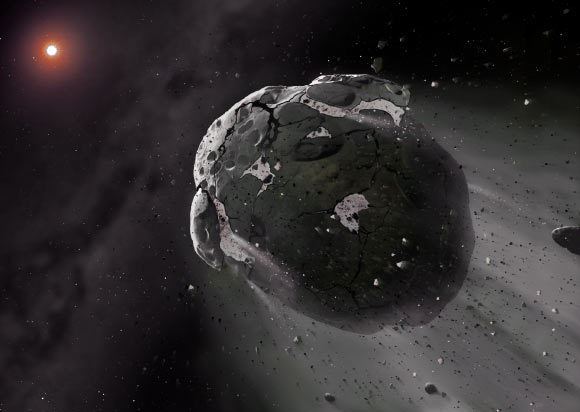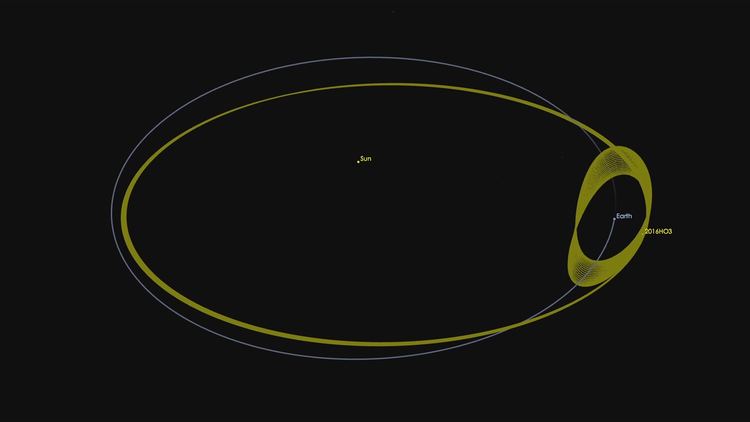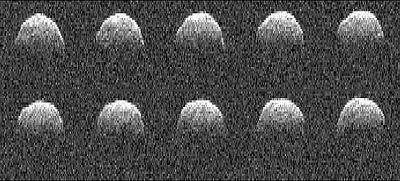Discovery date 27 April 2016 Observation arc 4468 days (12.23 yr) Orbital period 366 days Inclination 7.7713956° Discoverer Pan-STARRS | Minor planet category Apollo Eccentricity 0.1041429092983748 Discovered 27 April 2016 Argument of perihelion 307.22765° Asteroid group Apollo asteroid | |
 | ||
Aphelion 1.105500933206085 AU (165.38058566449 Gm) Semi-major axis 1.00122993490813 AU (149.78186634335 Gm) Similar Pan-STARRS discoveries, Other celestial objects | ||
(469219) 2016 HO3 (also written (469219) 2016 HO3) is an asteroid, discovered on 27 April 2016, that is possibly the most stable quasi-satellite of Earth.
Description

As it orbits the Sun, (469219) 2016 HO3 appears to circle around Earth as well. The object is beyond the Hill sphere of Earth, meaning that the Sun exerts a stronger pull on it than Earth does. Although it is too distant to be considered a true natural satellite of Earth, it is the best and most stable example to date of a near-Earth companion, or quasi-satellite.
"Since 2016 HO3 loops around our planet, but never ventures very far away as we both go around the sun, we refer to it as a quasi-satellite of Earth," said Paul Chodas, manager of NASA's Center for Near-Earth Object (NEO) Studies at the Jet Propulsion Laboratory in Pasadena, California.

"One other asteroid -- 2003 YN107 -- followed a similar orbital pattern for a while over 10 years ago, but it has since departed our vicinity. This new asteroid is much more locked onto us. Our calculations indicate 2016 HO3 has been a stable quasi-satellite of Earth for almost a century, and it will continue to follow this pattern as Earth's companion for centuries to come."
In its yearly trek around the sun, asteroid 2016 HO3 spends about half of the time closer to the sun than Earth is (that is, the asteroid is inside the Earth's orbit) and passes ahead of our planet, and about half of the time farther away (crosses outside Earth's orbit), causing it to fall behind. Its orbit is also tilted a little, causing it to bob up and then down once each year through Earth's orbital plane. In effect, this small asteroid is caught in a game of leap frog with Earth that will last for hundreds of years.

The asteroid's orbit also undergoes a slow, back-and-forth twist over multiple decades. "The asteroid's loops around Earth drift a little ahead or behind from year to year, but when they drift too far forward or backward, Earth's gravity is just strong enough to reverse the drift and hold onto the asteroid so that it never wanders farther away than about 100 times the distance of the moon," said Chodas. "The same effect also prevents the asteroid from approaching much closer than about 38 times the distance of the moon. In effect, this small asteroid is caught in a little dance with Earth."
Asteroid 2016 HO3 was first spotted on April 27, 2016, by the Pan-STARRS 1 asteroid survey telescope on Haleakalā, Hawaii, operated by the University of Hawaii's Institute for Astronomy and funded by NASA's Planetary Defense Coordination Office. The size of this object has not yet been firmly established, but it is likely about 40–100 m (130–330 ft).

